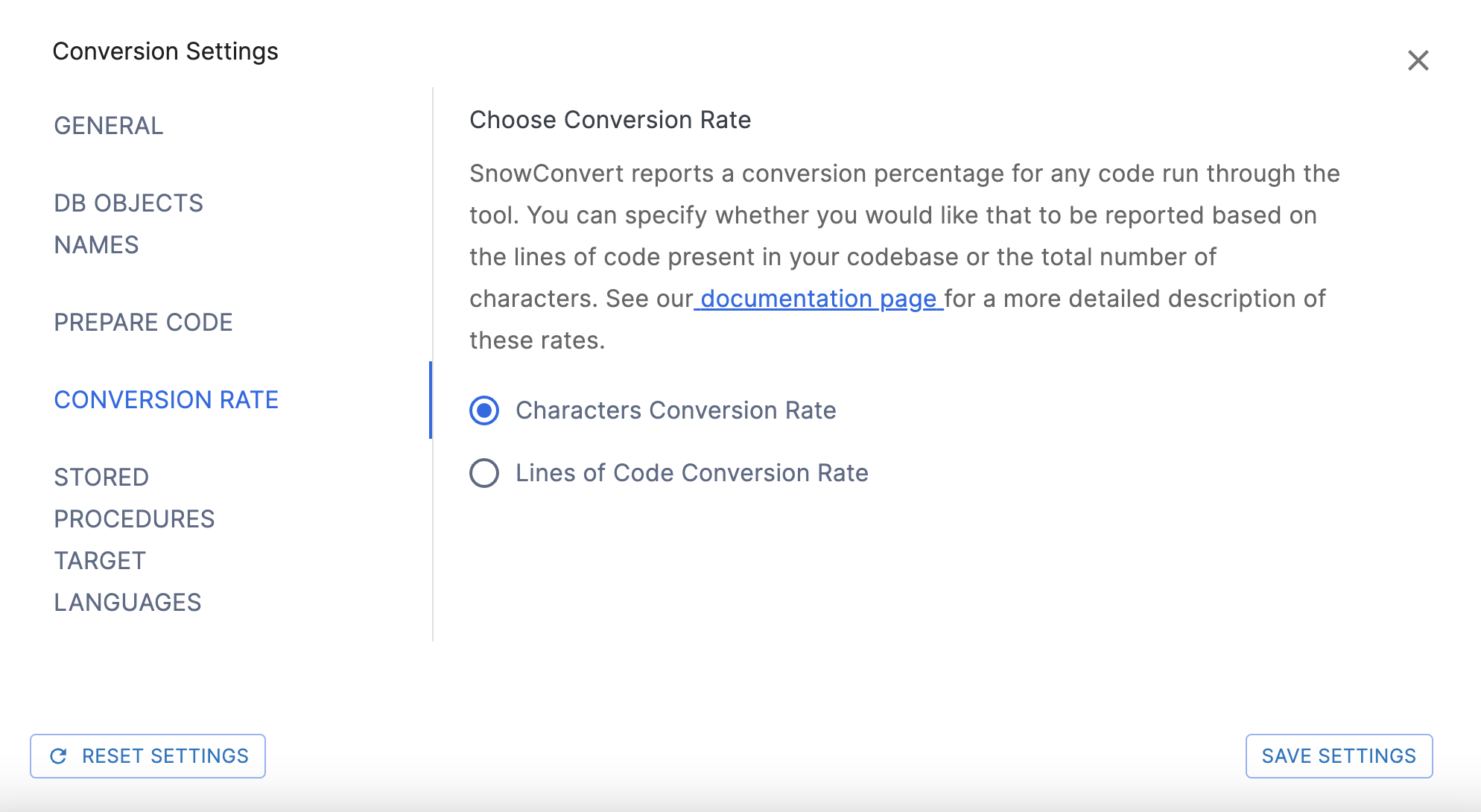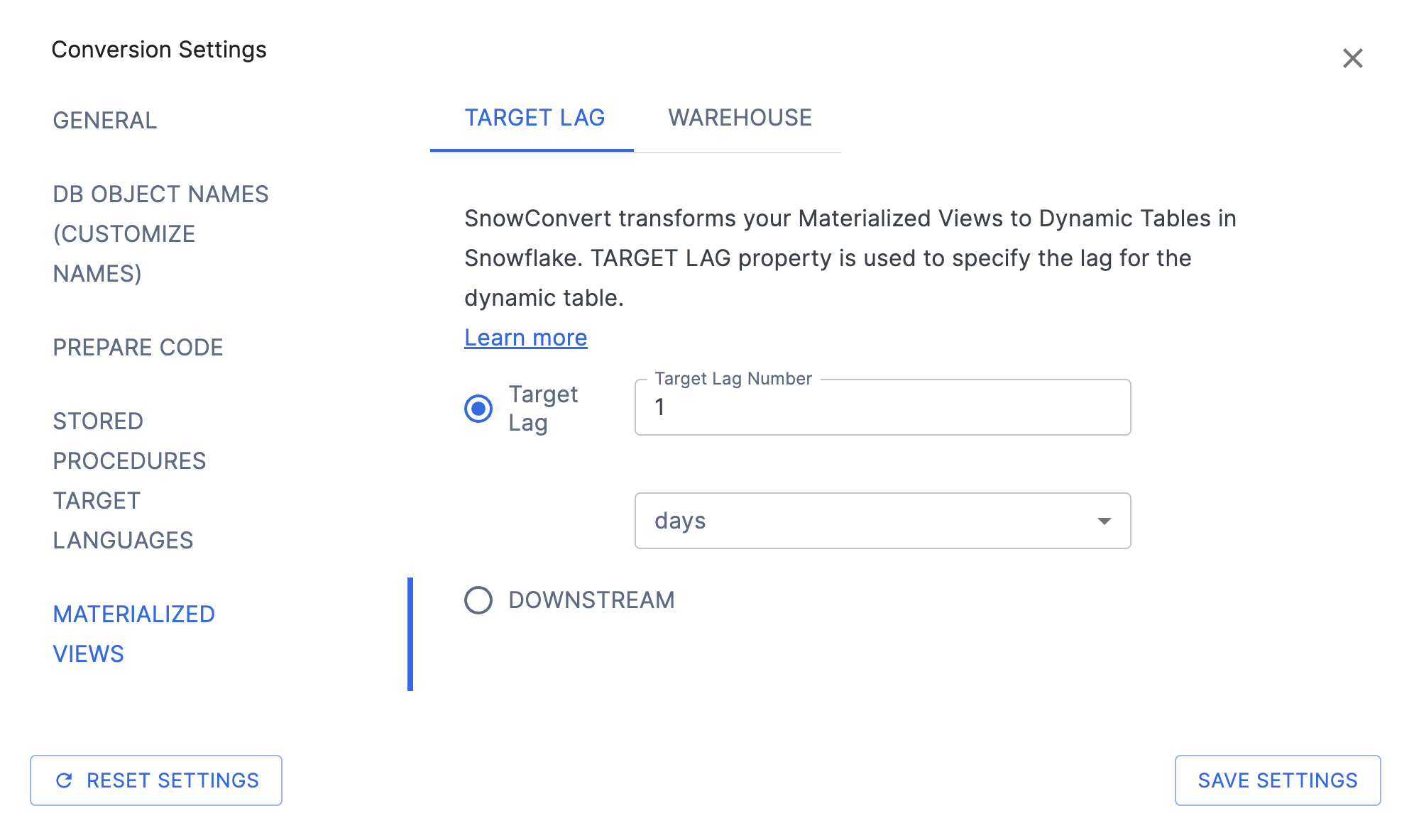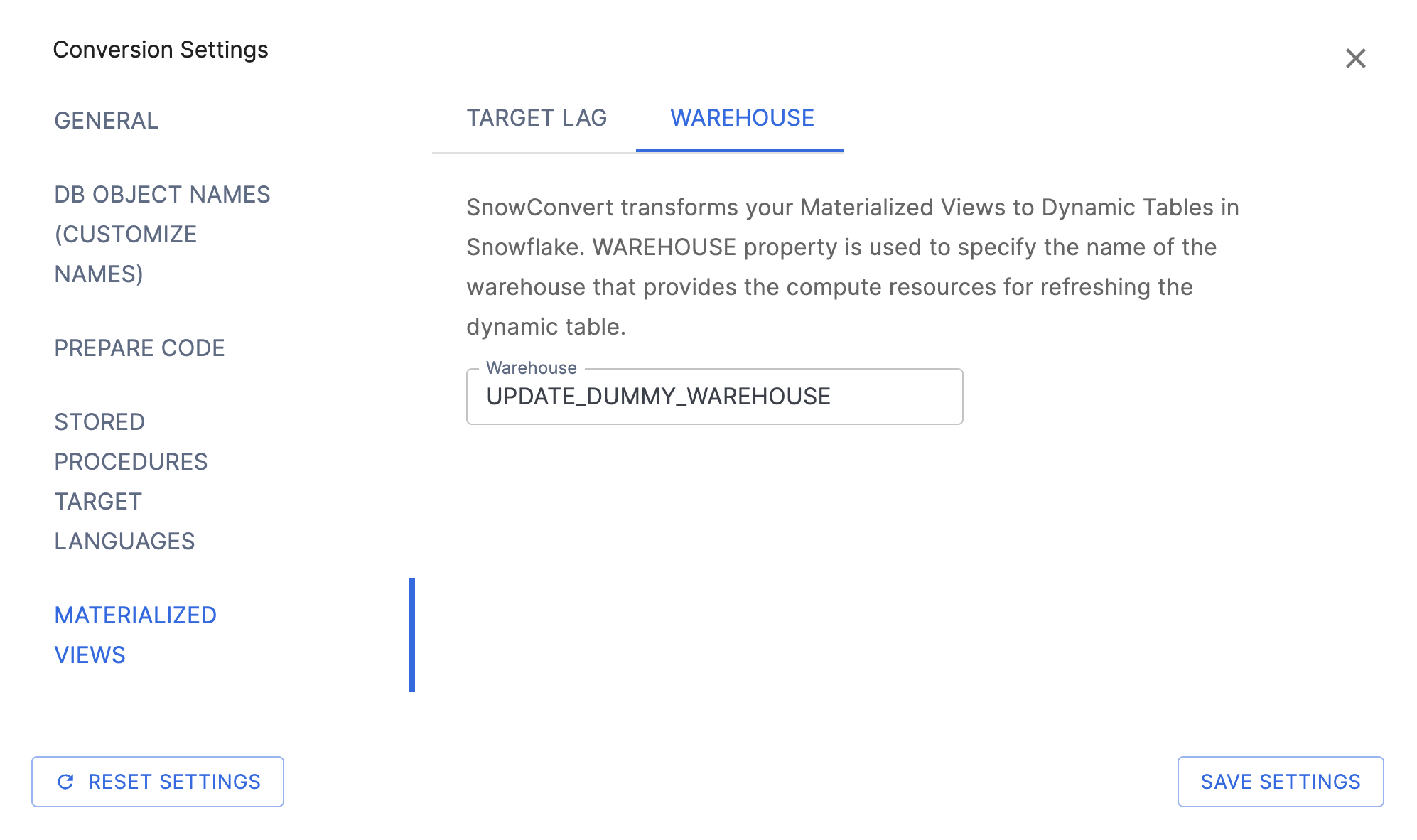SnowConvert AI – Allgemeine Konvertierungseinstellungen¶
Einstellungen für die Dateicodierung¶
Diese Einstellung in SnowConvert AI bestimmt, wie das Tool den Text in Ihren Quelldateien liest und interpretiert. Die Wahl der korrekten Codierung ist wichtig, um sicherzustellen, dass alle Zeichen, insbesondere Buchstaben mit Akzenten, Symbole oder Text aus verschiedenen Sprachen, bei der Konvertierung korrekt verarbeitet werden. Standardmäßig verwendet SnowConvert AI UTF-8.

Manuelles Auswählen einer Codierung
Sie können diesen automatischen Prozess überschreiben, indem Sie eine bestimmte Codierung aus dem Dropdown-Menü auswählen. Wenn Sie eine Codierung manuell auswählen (auch wenn Sie explizit UTF-8 auswählen), verwendet SnowConvert AI nur die ausgewählte Codierung, um die Dateien zu lesen.
Verfügbare Codierungsoptionen
Über die Dropdown-Liste können Sie erzwingen, dass SnowConvert AI eine dieser spezifischen Codierungen verwendet:
| Code Page | Name | Display Name |
|---|---|---|
| 1200 | utf-16 | Unicode |
| 1201D | unicodeFFFE | Unicode (Big endian) |
| 12000 | utf-32 | Unicode (UTF-32) |
| 12001 | utf-32BE | Unicode (UTF-32 Big endian) |
| 20127 | us-ascii | US-ASCII |
| 28591 | iso-8859-1 | Western European (ISO) |
| 65000 | utf-7 | Unicode (UTF-7). Not available in .NET 5 |
| 65001 | utf-8 | Unicode (UTF-8). Default encoding |
Erläuterungen zu System Default (Preview)
Bei Auswahl von System Default (Preview) verwendet SnowConvert AI einen flexiblen Ansatz:
Die Lösung versucht zunächst, die spezifische Zeichencodierung jeder Eingabedatei automatisch zu erkennen.
Wenn die automatische Erkennung die Codierung nicht erkennt, fährt SnowConvert AI mit
UTF-8fort, die eine sehr große Auswahl an Zeichen verarbeitet und für moderne Dateien üblich ist.Wenn die Interpretation von
UTF-8fehlschlägt, weil Zeichen gefunden werden, die in UTF-8 ungültig sind, versucht SnowConvert AI, die Standardsystemcodierung Ihres Computers zu verwenden.
Dies ist mit „Vorschau“ gekennzeichnet, da dieses Verhalten experimentell ist. Systemstandards können zwischen verschiedenen Computern und Betriebssystemen erheblich variieren, was möglicherweise zu inkonsistenten Ergebnissen oder nicht unterstützten Codierungen führt.
Empfehlung
Wenn Sie auf Fehler im Zusammenhang mit der Textinterpretation stoßen oder unlesbare Zeichen in Ihren Ergebnissen sehen, ist die manuelle Auswahl der richtigen Codierung die beste Lösung. Wenn Sie wissen, dass Ihre Dateien ein bestimmtes Format verwenden (z. B Westeuropa), wählen Sie dieses aus. Wenn Sie unsicher sind, aber Probleme mit der Codierung vermuten, ist die explizite Auswahl von UTF-8 oft ein guter Ausgangspunkt, da dies der gängigste Standard für moderne Dateien ist.
Materialized views conversion settings¶
Auf dieser Seite finden Sie die notwendigen Optionen, um die Parameter für die Übersetzung von materialisierten Ansichten (oder Join-Indizes in Teradata) in dynamische Tabellen während der Konvertierung anzupassen.


Um die vollständige Funktionalität von materialisierten Ansichten oder den Join-Indizes von Teradata zu erhalten, erzeugt SnowConvert AI dynamische Tabellen, anstatt eine materialisierte 1:1-Ansicht zu erstellen oder einen Join-Index in eine materialisierte Ansicht umzuwandeln. Dieser Ansatz ist notwendig, da Snowflake bestimmte Konfigurationsoptionen fehlen, die in materialisierten Ansichten anderer Systeme vorhanden sind.
Weitere Einzelheiten zu den Beschränkungen der materialisierten Ansichten von Snowflake finden Sie unter Einschränkungen beim Erstellen materialisierter Ansichten.
Transformation¶
Die hier definierten Einstellungen gelten für jede Instanz einer dynamischen Tabelle, die während des Konvertierungsprozesses erzeugt wird.
Dynamic Table Conversion Settings:
Target Lag: Diese Einstellung gibt die maximal zulässige Zeit an, die der Inhalt der dynamischen Tabelle hinter den Aktualisierungen der Basistabelle zurückbleiben darf. Wenn Sie diesen Wert z. B. auf 5 Minuten setzen, wird sichergestellt, dass die Daten in der dynamischen Tabelle nicht mehr als 5 Minuten hinter den Aktualisierungen der Basistabelle zurückbleiben.
Warehouse: Diese Einstellung gibt den Namen des Warehouse an, das die Computerressourcen für die Aktualisierung der dynamischen Tabelle bereitstellt. Sie müssen über die Berechtigung USAGE für dieses Warehouse verfügen, um die dynamische Tabelle erstellen zu können. Standardmäßig verwendet SnowConvert AI einen Platzhalterwert.
Weitere Informationen finden Sie in der Snowflake-Dokumentation zu dynamischen Tabellen.
Next steps for Amazon Redshift databases¶
For Amazon Redshift databases, you can use SnowConvert AI to complete the following tasks after conversion: